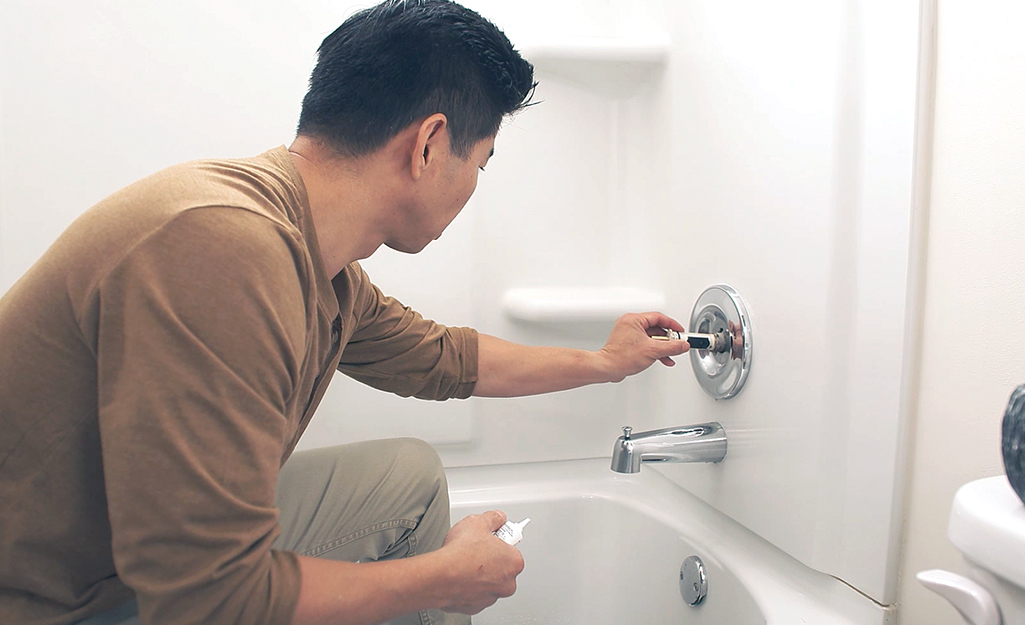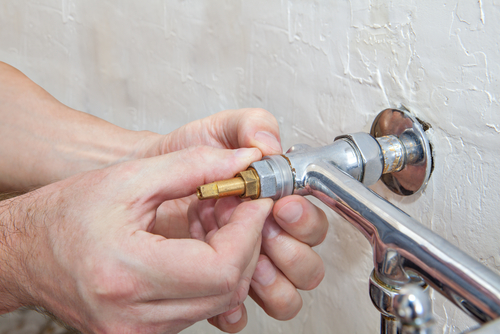They are making a number of great pointers related to Why It's Important to Fix Leaky Faucets overall in the content down below.

Leaking faucets might look like a minor trouble, however their impact exceeds just the inconvenience of the noise. From wasting water to incurring unneeded economic expenses and health risks, neglecting a dripping faucet can result in various consequences. In this short article, we'll delve into why it's vital to resolve this common household concern immediately and effectively.
Waste of Water
Ecological Impact
Leaking taps contribute substantially to water wastefulness. According to the Epa (EPA), a single tap dripping at one drip per second can throw away more than 3,000 gallons of water each year. This not only stress water sources but additionally affects ecosystems and wildlife based on them.
Financial Prices
Increased Water Expenses
Past the environmental impact, leaking taps can blow up water costs considerably. The accumulated wastage in time equates right into greater energy costs, which could have been prevented with prompt repair work.
Possible Building Damages
Moreover, extended trickling can bring about damage to fixtures and surface areas bordering the faucet. Water build-up can trigger discoloration, rust, and also architectural concerns if left neglected, leading to extra repair service costs.
Health Issues
Mold and Mold Development
The continuous existence of dampness from a dripping faucet produces an optimal atmosphere for mold and mildew growth. These fungis not just jeopardize indoor air quality yet additionally pose wellness threats, especially for individuals with respiratory conditions or allergic reactions.
Waterborne Conditions
Stagnant water in dripping faucets can end up being a breeding ground for microorganisms and other microorganisms, enhancing the danger of waterborne conditions. Pollutants such as Legionella microorganisms grow in stagnant water, potentially causing severe ailments when consumed or breathed in.
Do it yourself vs. Specialist Fixing
Benefits and drawbacks of Do It Yourself Repair Service
While some may try to take care of a leaking faucet themselves, do it yourself repair services include their very own set of obstacles. Without appropriate understanding and tools, do it yourself efforts can exacerbate the issue or cause incomplete repair services, extending the trouble.
Benefits of Working With an Expert Plumber
Working with a professional plumber ensures that the underlying root cause of the dripping faucet is resolved efficiently. Plumbing professionals possess the proficiency and devices to detect and fix tap issues effectively, conserving time and minimizing the risk of additional damage.
Step-by-Step Overview to Taking Care Of a Dripping Tap
Devices Required
Before attempting to fix a dripping faucet, gather the necessary tools, including an adjustable wrench, screwdrivers, replacement components (such as washing machines or cartridges), and plumber's tape.
Usual Faucet Issues and Their Solutions
Identify the kind of tap and the specific problem creating the drip. Common issues consist of damaged washing machines, rusty valve seats, or malfunctioning O-rings. Describe manufacturer directions or on-line tutorials for detailed guidance on repair work.
Safety nets
Routine Upkeep Tips
To stop trickling taps, perform routine maintenance such as cleaning aerators, examining for leaks, and replacing worn-out components quickly. Additionally, take into consideration mounting water-saving devices or updating to much more efficient components.
Significance of Prompt Repair Works
Addressing dripping faucets as soon as they're seen stops additional water wastage and prospective damage, eventually conserving both water and cash over time.
Effect On Home Value
Understanding of Well-Maintained Residential Property
Keeping a property in good condition, including addressing upkeep concerns like leaking faucets, boosts its viewed value and worth amongst potential customers or occupants.
Influence on Resale Worth
Features with well-kept plumbing fixtures, including faucets, command greater resale values in the real estate market. Attending to dripping taps can contribute to a favorable impact during property assessments and negotiations.
Environmental Duty
Individual Contribution to Preservation
Taking responsibility for fixing dripping faucets aligns with broader initiatives towards water preservation and ecological sustainability. Every person's activities collectively make a considerable effect on protecting precious sources.
Sustainable Living Practices
By prioritizing punctual repair services and taking on water-saving behaviors, individuals contribute to lasting living methods that benefit both existing and future generations.
Verdict
Dealing with a dripping tap goes beyond plain benefit; it's a necessary step towards conserving water, lowering financial prices, and protecting wellness and home. Whether via DIY fixings or professional help, doing something about it to deal with dripping faucets is a little yet impactful means to promote accountable stewardship of resources and contribute to a much healthier, a lot more lasting future.
How to Fix a Dripping or Leaky Faucet
A leaking faucet is one of the most common problems that homeowners encounter, but it being commonplace doesn’t make it any less annoying. The constant drip drip drip of a leaking bathtub faucet, showerhead, or sink tap can disturb your home’s serenity. Left neglected, a dripping faucet can also result in higher water bills and discoloration or mold growth in your sink or plumbing fixtures.
Fortunately, you don’t have to be a trained plumber to know how to stop a dripping faucet. With some basic tools, replacement parts, and a little patience, leaky faucet repair is a breeze. In this article, we’ll explain what causes dripping faucets and how you can fix them.
What Causes a Leaking Faucet?
Kitchen and bathroom faucets come in all manner of designs, but most involve some combination of valves, O-rings, seals, and washers. The O-ring is usually the weakest link, but any one of these pieces can wear down over time. Heat, moisture, temperature fluctuations, minerals, mold, and movement can contribute to warping and corrosion, breaking the watertight seal. This just comes with the territory of being a homeowner. Everything is always subject to wear and tear, and some component parts of your appliances and fixtures need to be replaced on occasion. At least replacement O-rings are cheap!
More rarely, dripping faucets can be a symptom of excessively high water pressure. Were this the case in your home, you would probably notice that the leak is not isolated to one faucet. Water pressure issues are harder to resolve on your own. We recommend contacting a professional plumber if you suspect your water pressure is too high.
How to Fix a Dripping Faucet
- Pipe wrench or monkey wrench
- Allen wrench set
- Screwdrivers
- Old towel or rag
Shut off the water.
Before you do anything, you need to turn off the water to keep from drenching your kitchen or bathroom. You should find a valve under the sink and against the wall. Once you’ve turned this valve, try turning the faucet on to confirm that the water source has been cut off.
If you can’t locate your local valve for the faucet you’re working on, you can always shut off the water to the house at the main valve. Of course, this will prohibit anyone from using the sinks, showers, or toilets while you’re working on the faucet that’s giving you trouble.
Plug or block the drain.
You’ll be disassembling the faucet and removing some small bits of hardware. Plug the drain with a stopper or rag to avoid the possibility of a small screw falling into your P-trap.
Take apart the faucet assembly.
There are several varieties of kitchen and bathroom faucets, each with its own manner of assembly. For detailed instructions on how to disassemble your faucet, you can refer to the fixture’s manual or contact the manufacturer. If you know whether you have a ball, disc, cartridge, or compression faucet, you can find detailed schematics online.
In general, you need to begin by removing the faucet handles. You might notice a small screw that you’ll need to remove with a screwdriver or Allen wrench. If you don’t see any visible securing hardware, it’s likely hidden under a decorative cap that can be unscrewed or popped off with flathead screwdriver.
Remove each piece methodically, consulting a schematic when necessary. Take notes or arrange the pieces in such a way to make it easier to correctly reassemble the faucet later.
Remove the cartridge.
Once you’ve removed the handles and securing hardware, you should be able to remove the valve cartridge or stem. Some cartridges will slide right out. Other faucet models will require you to loosen a nut with a pipe wrench before you can remove the valve stem.
Examine the exposed hardware.
With the cartridge or stem removed, inspect the component parts. Check the rubber O-rings for wear and tear. Also examine the seat washer for corrosion or other damage. These pieces are usually the responsible parties for a dripping faucet, but it’s worth inspecting the other component parts while you have the faucet disassembled.
Find replacement parts.
Once you’ve identified which faucet component has failed, find an identical replacement. Your local hardware store should have O-rings, seat washers, and other standard components in stock. If you have a luxury or uncommon faucet, you may have to contact the manufacturer for a replacement part.
It’s a good idea to take your old parts with you to the hardware store so you can compare them with the store’s inventory and be sure you’re purchasing the correct replacement.
Reassemble the faucet.
With your new parts in hand, reconstruct the faucet and handles. Don’t be tempted to overtighten screws or nuts. You might think this could create a better seal, but it can instead damage or bend a delicate part of the assembly and create a new problem for you.
Turn on the water and test the faucet.
The only thing left to do is test your work. Unplug the sink, turn the water back on, and try the faucet. Congratulate yourself on a job well done!
https://www.libertyhomeguard.com/how-to-fix-a-dripping-or-leaky-faucet/

I recently found that blog entry on How to Fix a Dripping or Leaky Faucet when doing a lookup on the internet. Sharing is good. You won't know, you may be helping someone out. Many thanks for taking the time to read it.
Comments on “Why It's Essential to Correct a Dripping Faucet”